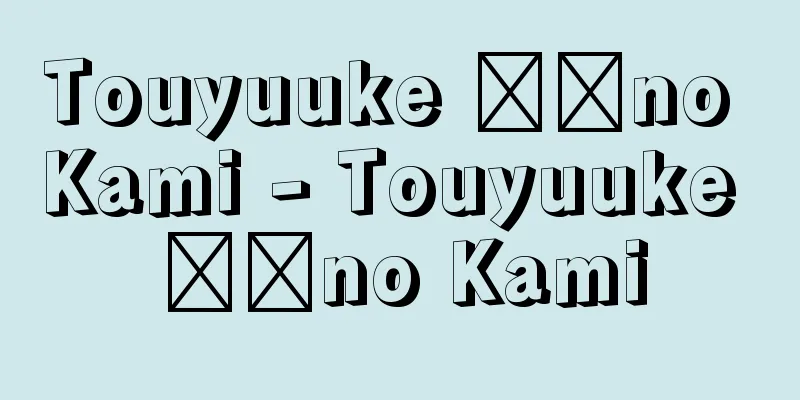Pension - Onkyu

|
A type of pension system for Japanese civil servants. It is a pension or lump sum paid to former military personnel up until the end of World War II and civil servants who retired before the transition to the mutual aid association system as a means of securing a living for themselves and their surviving family members after their death, and is considered part of the social security system. [Tetsuya Hitosugi and Toru Haneda] History of the pension systemIt was established for army and navy personnel by the Dajokan's 1875 (Meiji 8) orders "General Provisions for Assistance for Injured Army Military Officers and Memorial Services for the Deceased and Their Families" and the "Naval Retirement Order," and in 1884 the "Civil Service Pension Order" extended it to civil service officials as well. Separate pension systems were also established for school teachers, police officers, etc. The "Pension Law" of 1923 (Taisho 12) consolidated and consolidated the pensions established for each type of civil service, and while it underwent several revisions, including the major one in 1933 (Showa 8), it has played a privileged role as the pension system for civil servants. After World War II, under the occupation policy which sought the dismantling of the militarist system and democratization, pensions for military personnel and others were suspended, but after the Peace Treaty with Japan came into effect, the "Law for the Assistance of Families of the War-Wounded, Sick and Dead" was enacted in 1952, and military pensions were reinstated the following year. For civil servants, the prewar system continued to apply, but the "Public Enterprise Employees, etc. Mutual Aid Association Law" was enacted in 1956, the "National Public Service Personnel Mutual Aid Association Law" in 1958, and the "Local Public Service Personnel, etc. Mutual Aid Association Law" in 1962, and they were successively exempted from the Pension Law and transitioned to the mutual aid association system. [Tetsuya Hitosugi and Toru Haneda] Current situation and issuesCurrently, pensions are paid out in two types: regular pensions, injury and sickness pensions, assistance allowances, and special pensions for the surviving family members of injured or sick persons. The first two are paid to the employee, and the latter two to the surviving family members. Lump sums include injury and sickness grants, lump sum pensions, and lump sum assistance allowances. Regular pensions are paid out when a public servant retires after a certain number of years of service (ranging from 12 to 17 years depending on the type of job). Injury and sickness pensions include increased pensions paid to those who become severely disabled as a result of a service-related injury or illness, and injury and sickness pensions paid to those who do not become severely disabled. Although the number of pension recipients is gradually decreasing due to its nature, it was approximately 1.01 million people (including 980,000 former military personnel) as of the end of March 2008, and pension-related expenses accounted for 1.0% of general account expenditures for fiscal 2008. Problems with pensions include that unlike the mutual aid system, most of the funding comes from the national treasury, it does not apply to those who were effectively conscripted from former colonies during the war, and it is often considered in conjunction with the recent desire to increase defense awareness (in other words, it is not recognized as part of the social security system). [Tetsuya Hitosugi and Toru Haneda] [References] | | |Source: Shogakukan Encyclopedia Nipponica About Encyclopedia Nipponica Information | Legend |
|
日本の公務員に対する年金制度の一種。主として第二次世界大戦終了までの旧軍人と、共済組合制度に移行する前に退職した文官の、本人および本人死亡後の遺族の生活保障として給付される年金または一時金であり、社会保障制度の一環とされる。 [一杉哲也・羽田 亨] 恩給制度の沿革1875年(明治8)の太政官(だじょうかん)達「陸軍武官傷痍(しょうい)扶助及死亡ノ者祭粢(さいし)並其(その)家族扶助概則」および「海軍退隠令」によって陸海軍人を対象として発足し、1884年には「官吏恩給令」によって文官にも支給されるようになった。別に学校教職員、警察官などに対する恩給制度も制定された。このように官吏の種類ごとに設けられてきたものを整理統合したのが、1923年(大正12)の「恩給法」であり、1933年(昭和8)の大改正をはじめとする数次の改正を経ながら、官吏の年金制度として特権的な役割を担ってきた。第二次世界大戦後、軍国主義体制の解体、民主化を求める占領政策のもとで、軍人などの恩給は停止されたが、対日講和条約発効後、1952年(昭和27)に「戦傷病者戦没者遺家族等援護法」が制定され、翌年には軍人恩給も復活した。文官については戦後も戦前の制度が適用されていたが、1956年に「公共企業体職員等共済組合法」、1958年に「国家公務員共済組合法」、1962年に「地方公務員等共済組合法」が制定されて、順次恩給法の適用外となり、共済組合制度に移行することとなった。 [一杉哲也・羽田 亨] 現状と問題点現在支給されている恩給には年金と一時金がある。年金には普通恩給、傷病恩給、扶助料、傷病者遺族特例年金があり、前二者は本人、後二者は遺族に支給される。一時金には傷病賜金、一時恩給、一時扶助料がある。普通恩給は、公務員として一定年数(職種別に12~17年の幅がある)を在職し退職したときに支給される。傷病恩給には、公務傷病のため重度障害となった者に支給される増加恩給、重度障害に達しなかった者に支給される傷病年金などがある。 年金恩給受給者は、その性質上しだいに減少してはいるが、2008年(平成20)3月末において約101万人(うち旧軍人98万人)であり、恩給関係費は2008年度一般会計歳出の1.0%を占めている。共済制度と異なりその財源がほとんど国庫負担であること、大戦中の旧植民地から事実上徴兵された人たちに適用されていないこと、近年の防衛意識増進の意向と結び付いて考慮されることが多いこと(換言すれば、社会保障制度の一環と認識されていないこと)などが問題点とされる。 [一杉哲也・羽田 亨] [参照項目] | | |出典 小学館 日本大百科全書(ニッポニカ)日本大百科全書(ニッポニカ)について 情報 | 凡例 |
<<: Acoustic Chemistry - Onkyo Kagaku
Recommend
Development disaster
This refers to disasters caused by development act...
Kitchen Cabinet
The seventh President of the United States, A. Jac...
Prince Kuniyoshi
Year of death: March 20, 1326 (April 23, 1326) Yea...
The Seven Doctors' Petition Incident
A movement in favor of war between Japan and Russ...
Pyrylium
…They are considered to be the bases of a group o...
Karneadēs (English spelling)
...Early on, there was Pyrrho (whose name became ...
orange-eye butterfly bush
... B . curviflora Hook.et Arn.f.venefera (Makino...
Fredholm - Fredholm (English spelling) Erik Ivar Fredholm
1866‐1927 Swedish mathematician. Born and died in ...
Colombe, Michel
[Birth] 1430. Burgundy Died: 1512. Tours A represe...
Giant tiger salamander - Giant tiger salamander
...The family Salamanderidae includes two genera ...
Paper Mache Craft - Harikozaiku
A craft item made by layering paper on a wooden mo...
de Saedeleer, V. (English spelling) deSaedeleerV
…Fauvism was represented by the sculptor Wouters,...
Airglow - Taikikou (English spelling)
It is radiation emitted by atoms and molecules in...
First Gate - First Gate
...When a masugata is placed inside the tiger'...
Izumidai - Izumidai
…In recent years, the species that has been activ...









